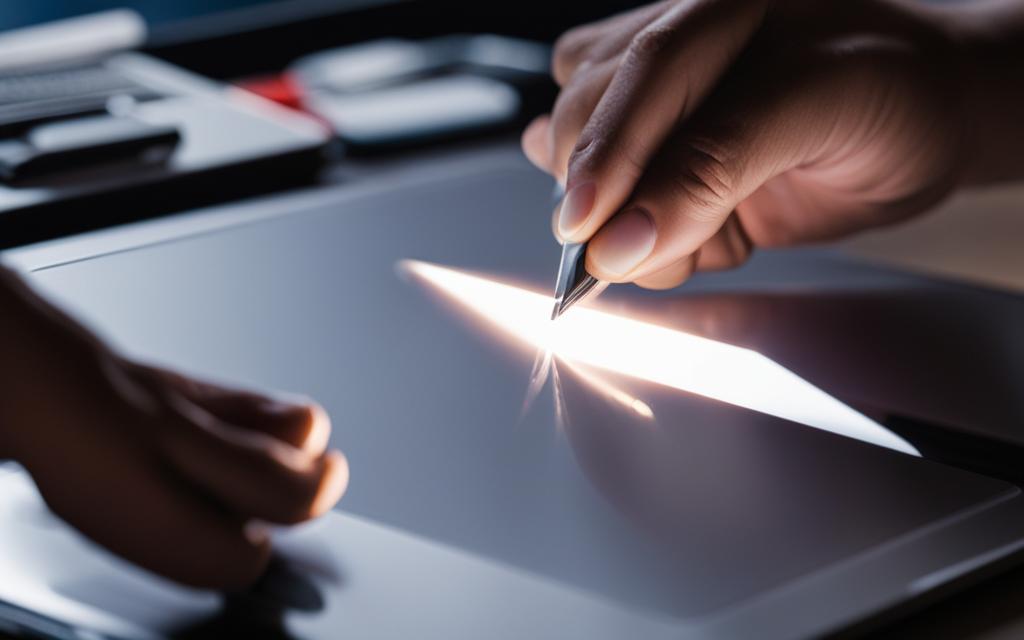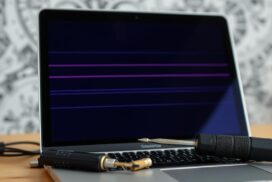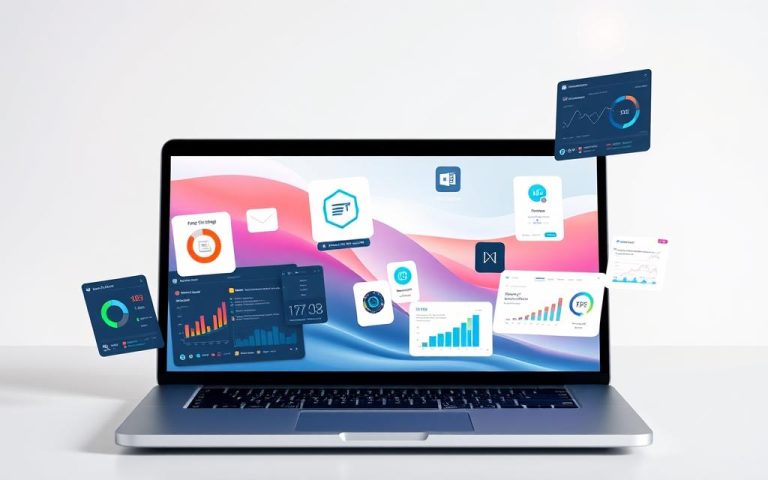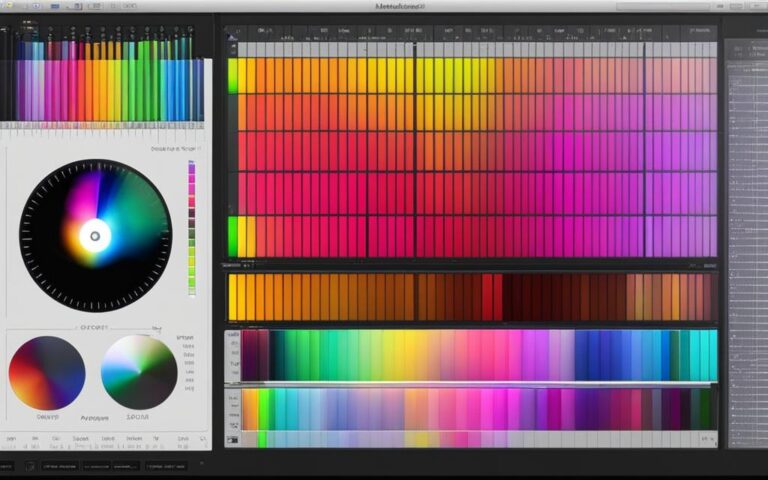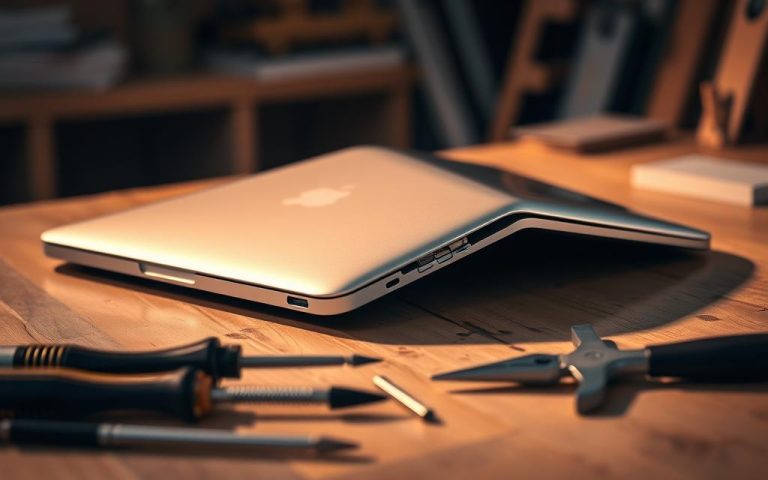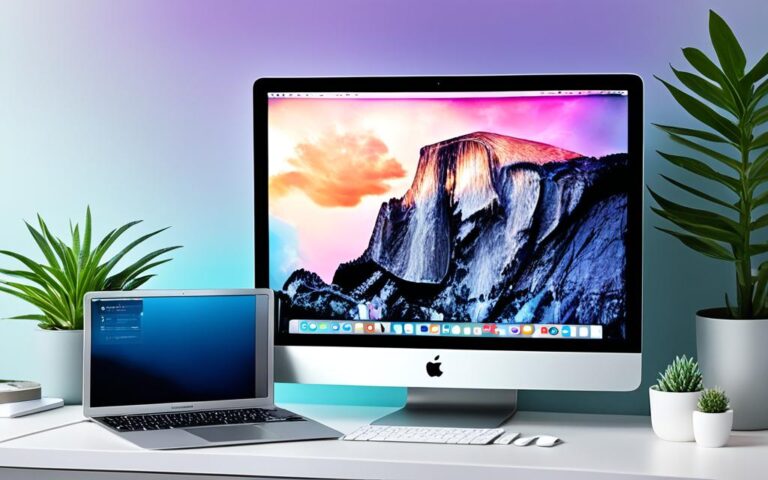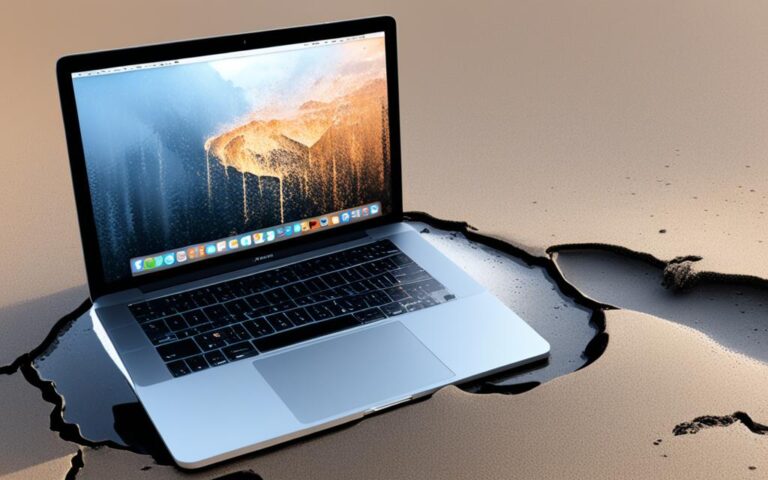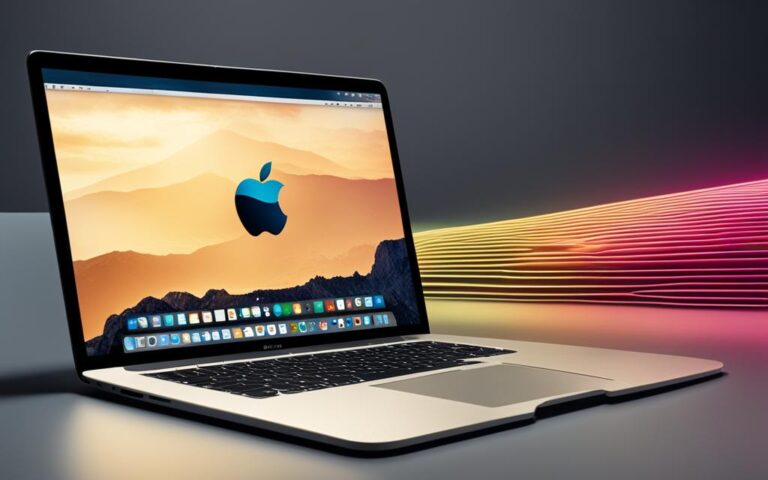MacBook Pro Backlight Bleed Fix
If you own a MacBook Pro and have noticed uneven illumination on your display, you may be experiencing backlight bleed. This common issue can detract from your visual experience, especially in darker environments or when viewing content with black borders. In this article, we will explore the causes of backlight bleed on MacBook Pro and provide effective solutions to fix the issue.
To help you better understand backlight bleed, let’s take a closer look at what it is and how it affects your MacBook Pro display. Understanding the issue is crucial in finding the right solutions for a successful fix. So, let’s dive in and address this concern head-on.
Understanding Backlight Bleed on MacBook Pro
Backlight bleed refers to the uneven distribution of light on the screen of a MacBook Pro, resulting in patches of unwanted illumination. It occurs when the backlight seeps through the edges of the screen. This issue is more noticeable in darker environments or when viewing content with black borders.
Backlight bleed can be a frustrating problem for MacBook Pro users. It can detract from the overall visual experience, especially when watching movies or working on projects that require accurate color representation. Understanding the nature of this issue can help you identify and address it effectively.
When a MacBook Pro’s display suffers from backlight bleed, the light from the backlighting source infiltrates areas of the screen where it should not appear. This can create distracting bright spots, uneven lighting, or a glowing effect along the edges of the display. The bleed is most pronounced in dark or low-light settings and can be exacerbated when displaying content with black borders.
To further understand the problem, let’s take a closer look at the main causes and factors contributing to backlight bleed on MacBook Pro screens.
One possible cause is the manufacturing process. During the production of MacBook Pro displays, slight imperfections may occur, leading to uneven backlighting distribution. This can be attributed to variations in panel assembly or the bonding process between the layers of the display.
Another significant factor is pressure applied to the screen. Excessive force on the edges or corners of the display can cause the layers to separate, letting light leak through and creating backlight bleed.
Temperature changes can also play a role in exacerbating backlight bleed. The expansion and contraction of the display components due to temperature variations may affect the integrity of the panel, allowing light to escape through the edges.
The aging of the display can contribute to backlight bleed as well. Over time, the adhesive holding the layers of the display together may degrade, leading to separation and backlight leakage.
To visually appreciate the backlight bleed issue, take a look at the following example:
When dealing with MacBook Pro backlight bleed, it is essential to recognize the signs and symptoms. In the next section, we will discuss how to identify backlight bleed on your MacBook Pro and differentiate it from other display-related issues.
Causes of Backlight Bleed on MacBook Pro
Backlight bleed is a frustrating issue that can affect the visual quality of your MacBook Pro display. Understanding the causes of backlight bleed is crucial for effectively addressing the problem and finding suitable solutions.
Poor manufacturing is one of the primary causes of backlight bleed on MacBook Pro. During the manufacturing process, if the screen is not properly aligned or the adhesive used to attach the layers of the display is unevenly applied, it can result in light leakage.
Another contributing factor is pressure on the screen. Excessive force applied to the display, whether from mishandling, accidentally putting weight on the screen, or carrying the MacBook Pro in a tightly packed bag, can cause the layers to separate slightly and create gaps for light to leak through.
Temperature changes can also play a role in backlight bleed. MacBook Pro displays are sensitive to temperature variations, and extreme heat or cold can cause the layers to expand or contract, potentially leading to misalignment and light leakage.
Additionally, aging of the display components can contribute to backlight bleed. Over time, the materials used in the display may degrade or wear out, making the screen more prone to backlight bleed.
It’s important to note that backlight bleed can exist to some extent in almost all LCD displays, including those of high-end devices like MacBook Pro. However, excessive or noticeable backlight bleed is a cause for concern and should be addressed.
By understanding the causes of backlight bleed on your MacBook Pro, you can take appropriate measures to prevent or minimize the issue. In the next section, we will discuss how to identify backlight bleed and determine if your MacBook Pro is affected.
Identifying Backlight Bleed on MacBook Pro
To determine if your MacBook Pro is affected by backlight bleed, there are a few steps you can take. First, display a black image or open a dark-themed application in a dark room. Pay close attention to the edges of the screen and observe if there are areas where the black image appears brighter or illuminated. This can indicate the presence of backlight bleed.
Varying the brightness settings can also help identify backlight bleed. Adjust the brightness level and observe if there are any changes in the appearance of light leakage or uneven illumination on the screen. By experimenting with different brightness settings, you can get a better understanding of the extent of the backlight bleed issue.
If you’re unsure whether the subtle variations in brightness are caused by backlight bleed or other factors, examining the screen in a dark environment can provide more accurate results. The contrast between the dark room and the illuminated areas on the screen will make it easier to spot backlight bleed.
Remember, backlight bleed can vary in severity from device to device. Some MacBook Pro models may experience minimal backlight bleed, while others may have more noticeable instances. By following these steps, you can effectively identify backlight bleed on your MacBook Pro.
Solutions to Fix Backlight Bleed on MacBook Pro
If you’re experiencing backlight bleed on your MacBook Pro, there are several methods you can try to minimize or fix the issue. These solutions can help improve the visual quality of your display and enhance your overall user experience. However, it’s important to exercise caution and ensure that you don’t cause any further damage to your device. Let’s explore some effective solutions:
1. Adjusting Pressure
One method to address backlight bleed is by adjusting the pressure on the affected areas of the screen. Gently applying pressure with your fingers around the edges of the display may help redistribute the backlight and reduce the bleed. It’s crucial to be gentle and avoid applying excessive force to prevent any damage to the screen.
2. Temperature Conditioning
Another technique to try is temperature conditioning. This involves subjecting your MacBook Pro to either cold or heat to potentially alleviate backlight bleed. One approach is to place your MacBook Pro in a sealed plastic bag and keep it in the freezer for a short period of time. Alternatively, you can use a heating pad or gentle heat source to warm the affected areas of the screen. However, be extremely careful with temperature extremes and avoid exposing your device to excessive heat or moisture.
3. Applying Pressure with a Microfiber Cloth
Using a soft microfiber cloth, you can apply gentle pressure to the edges of the display to potentially reduce backlight bleed. The cloth acts as a buffer and helps distribute the backlight evenly across the screen. Remember to be cautious and use minimal pressure to avoid causing any damage.
4. Seeking Professional Repair
If the aforementioned DIY methods don’t yield satisfactory results or if you’re uncomfortable attempting them yourself, it’s advisable to seek professional repair services. An authorized service provider or an Apple Store technician can assess the extent of the backlight bleed and recommend appropriate solutions, such as screen replacement or repair.
Remember, backlight bleed can vary in severity, and the effectiveness of these solutions may vary depending on the individual case. It’s always a good idea to start with the least invasive methods and gradually progress to more advanced options if necessary. Prioritize the safety of your device and consult a professional if you’re unsure or uncomfortable addressing the issue yourself.
With these potential solutions, you can take steps to minimize or fix backlight bleed on your MacBook Pro, enhancing your visual experience and enjoying the full capabilities of your device.
Conclusion
In conclusion, backlight bleed can be a frustrating issue that affects the visual quality of MacBook Pro displays. However, there are solutions available to minimize or fix this problem. By understanding the causes of backlight bleed and trying the recommended methods, you can significantly improve your MacBook Pro’s visual experience.
It is important to exercise caution when attempting DIY fixes, as improper handling may result in further damage to your device. If you are uncertain or uncomfortable with performing the fixes yourself, it is always advisable to seek professional assistance from authorized service providers.
By addressing backlight bleed, you can enhance the overall viewing experience on your MacBook Pro. Whether it’s adjusting pressure, utilizing temperature conditioning methods, or seeking professional repair, finding the right solution will help you enjoy a more visually appealing display.
FAQ
What is backlight bleed on MacBook Pro?
Backlight bleed refers to the uneven distribution of light on the screen of a MacBook Pro, resulting in patches of unwanted illumination. It occurs when the backlight seeps through the edges of the screen.
What causes backlight bleed on MacBook Pro?
There are several factors that can contribute to backlight bleed on a MacBook Pro, including poor manufacturing, pressure on the screen, temperature changes, and aging of the display components.
How can I identify backlight bleed on my MacBook Pro?
To determine if your MacBook Pro is affected by backlight bleed, you can display a black image or open a dark-themed application in a dark room. Pay close attention to the edges of the screen and observe if there are areas where the black image appears brighter or illuminated. Varying the brightness settings can also help identify backlight bleed.
What are the solutions to fix backlight bleed on MacBook Pro?
There are several methods you can try to minimize or fix backlight bleed on your MacBook Pro, including adjusting the pressure on the affected areas of the screen, temperature conditioning (using the freezer or heat methods), applying pressure with a microfiber cloth, and seeking professional repair if necessary. Each method should be done with caution to avoid causing further damage to the device.
How can I improve the visual experience on my MacBook Pro?
Understanding the causes of backlight bleed and trying the recommended solutions can help improve the visual experience on your MacBook Pro. Remember to be cautious when attempting DIY fixes and seek professional assistance if needed.
